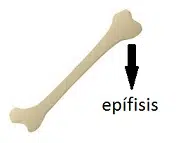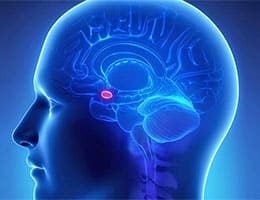 The Greek word epiphysis , which can be translated as "excrescence" (a protuberance), came into scientific Latin as epiphysis . This term, in turn, resulted in epiphysis in our language .
The Greek word epiphysis , which can be translated as "excrescence" (a protuberance), came into scientific Latin as epiphysis . This term, in turn, resulted in epiphysis in our language .
The concept of epiphysis has two uses in the field of anatomy : it can refer to an endocrine gland found in the brain or to the ends of a long bone .
In the first case, the epiphysis is located under the layer of white matter known as the corpus callosum , which is located between both cerebral hemispheres. It is an endocrine (or endocrine) gland since it secretes its production directly into the blood . Its shape resembles a pine cone.
Also called the pineal gland , the epiphysis produces melatonin , a hormone that has an impact on sexual behavior. Generally, segregation occurs at night, since the epiphysis does not act with light. Melatonin affects sleep patterns and the activity of the gonads, which is the organ responsible for forming gametes (sex cells).
The color of the pineal gland is reddish gray and in our species its dimensions are comparable to those of a grain of rice, which is equivalent to an average of 6.5 microns. It is located exactly in the dorsal part of the superior colliculus (also called the optic tectum , it is a fundamental structure of the central part of the brain of vertebrates), in the middle of the organs of the thalamus.
Together with the medullary striae and the habenular nuclei, the epiphysis is contained in the epithalamus , the name by which the diencephalic structure located above the thalamus is known.
The epiphysis is also part of the quadrigeminal cistern , a large space that is also related to the quadrigeminal tubercles and the posterior recesses of the third ventricle, one of which extends into the stalk of the epiphysis itself. The fluid that bathes it is called cerebrospinal .
The epiphysis is not isolated from the body by the permeable blood-brain barrier system, unlike almost all components of the mammalian brain . The composition of this gland consists almost entirely of pinealocytes , a type of cell that secretes the hormone called melatonin.
In the human body, connective tissue can be seen around the pinealocytes, and a pia mater capsule (a meninge that is responsible for protecting the central nervous system ) covers the entire epiphysis. The cytoplasm of pinealocytes is composed in part of basophils , the leukocytes that are least abundant in the blood. It is worth mentioning that in the epiphysis there are also four other types of cells, although to a lesser extent:
 * interstitial : they are located in the middle of the pinealocytes. Its color is darker and its nuclei are elongated;
* interstitial : they are located in the middle of the pinealocytes. Its color is darker and its nuclei are elongated;
* perivascular phagocytes : they present antigen and are located a short distance from the blood vessels;
* pineal neurons: cells que no se encuentran en los roedores;
* similar to peptidergic neurons : their function may focus on communication between cells.
Epiphysis, on the other hand, is the name for the tips of the long bones. A cartilaginous sector separates the epiphyses from the diaphysis (the body) of the bones while the individual is growing. As this sector ossifies, the bone gains length.
Generally the epiphysis is wider than the diaphysis: the joints are inserted into it. It is made up of a layer of compact tissue in its peripheral area and spongy tissue in the central part. The tibia , ulna, femur, radius and fibula are some of the bones that have epiphyses.
